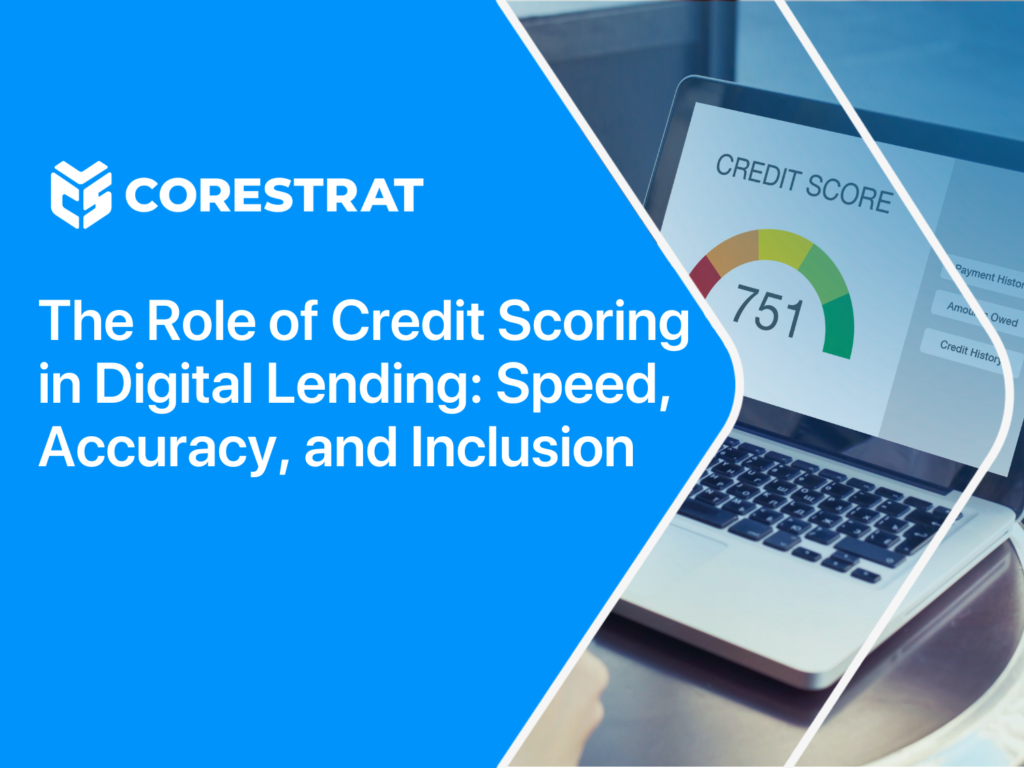The digital transformation in the financial sector has revolutionised the way lending operates, with credit scoring playing a pivotal role in this evolution. As the world moves towards a more digital-first approach, traditional lending practices have given way to faster, more accurate, and inclusive methods, all enabled by advancements in credit scoring. This article delves into the critical role of credit scoring in digital lending, focusing on how it enhances speed, accuracy, and inclusion in the lending process.
Speed: Accelerating the Lending Process
One of the most significant advantages of digital lending is speed. Traditional lending processes could take days or even weeks to complete, with multiple rounds of paperwork, manual reviews, and in-person meetings. In contrast, loan origination systems can approve loans in minutes, thanks to automated credit scoring systems.
These systems analyse a borrower’s creditworthiness almost instantaneously by pulling data from various sources, including credit bureaus, bank accounts, and even social media profiles. This rapid analysis enables lenders to make quick decisions, providing borrowers with immediate access to funds.
For instance, peer-to-peer (P2P) lending platforms and fintech companies have leveraged advanced credit scoring algorithms to offer instant loans to individuals and small businesses. This speed is particularly beneficial for those in urgent need of funds, such as for medical emergencies or business opportunities.
Moreover, the automation of credit scoring reduces the operational costs for lenders, as they no longer need to invest in extensive manual processes. These cost savings can be passed on to borrowers in the form of lower interest rates or fees, making loans more affordable.
Accuracy: Enhancing Decision-Making with Data
While speed is crucial, it must not come at the expense of accuracy. Accurate credit scoring is essential for credit risk management and ensures that lending decisions are sound. Digital lending platforms achieve this accuracy by harnessing the power of big data and machine learning.
Traditional credit scores primarily considered factors such as payment history, credit utilisation, and length of credit history. However, these factors often provide an incomplete picture, particularly for those with thin credit files or non-traditional financial behaviours.
Modern credit scoring models incorporate a wide range of data points, including alternative data such as utility payments, rent payments, and even online behaviour. By analysing this diverse set of data, these models can assess creditworthiness with greater precision.
Machine learning algorithms play a crucial role in enhancing the accuracy of credit scoring. These algorithms can identify patterns and correlations within the data that may not be immediately apparent to human analysts. For example, they can recognise that a borrower who consistently pays their rent on time is likely to be a reliable borrower, even if they have limited credit history.
Furthermore, these algorithms continuously learn and adapt over time, refining their predictions as they process more data. This adaptability is particularly valuable in a rapidly changing economic environment, where traditional credit scoring models may struggle to keep up.
The result is a more accurate assessment of credit risk, reducing the likelihood of defaults and enabling lenders to extend credit to a broader range of borrowers.
Inclusion: Expanding Access to Credit
One of the most significant benefits of modern credit scoring is its potential to promote financial inclusion. Traditional credit scoring models often excluded individuals with little or no credit history, such as young adults, immigrants, or those in developing countries. This exclusion perpetuated a cycle where these individuals struggled to build credit because they were unable to access credit in the first place.
Digital lending, powered by advanced predictive model-based credit scoring, has the potential to break this cycle. By incorporating alternative data for credit risk assessment, lenders can assess the creditworthiness of individuals who would otherwise be deemed “credit invisible.” This includes data such as mobile phone payments, utility bills, and even social media activity, which can provide valuable insights into a person’s financial behaviour.
For example, a young professional who has consistently paid their rent and utility bills on time, but has never taken out a loan or used a credit card, may have a low or nonexistent traditional credit score. However, by considering these alternative data points, a digital lender can recognise their responsible financial behaviour and offer them a loan.
This inclusivity is particularly important in emerging markets, where large segments of the population remain unbanked or underbanked. In these regions, traditional credit scoring models are often ineffective, as many individuals operate primarily in cash and have little interaction with formal financial institutions. Digital lending platforms that leverage alternative data can bring these individuals into the financial system, providing them with access to credit and opportunities for economic growth.
Conclusion
Credit scoring has always been a cornerstone of lending, but in the digital age, it has taken on an even more critical role. By enhancing speed, accuracy, and inclusion, modern credit scoring models are transforming the lending landscape, making it more efficient, equitable, and accessible. As digital lending continues to grow, credit scoring will remain at the heart of this transformation, driving innovation and expanding access to credit for millions of people worldwide.



